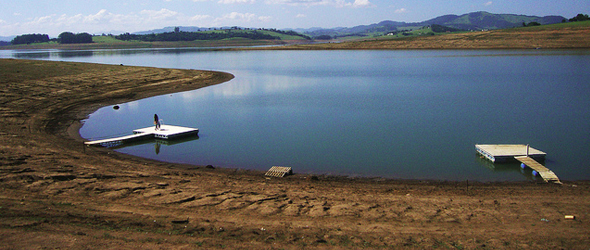Global Gold Rush: The Price of Mining Pursuits On The Water Supply
Water supplies remain key to the global boom in gold mining, driven by high demand and near-record prices.
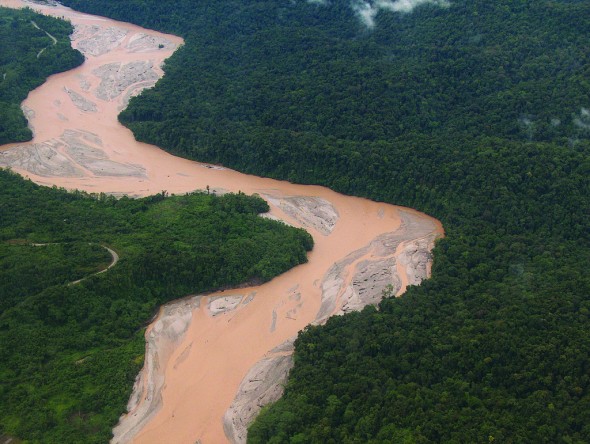
By Codi Yeager-Kozacek
Circle of Blue
Driven by historically high gold prices and increased interest from foreign investors, mining boomtowns are springing up all over the world and wreaking a rising toll on water resources and the environment. Many places where new mines are being opened and old ones expanded, local authorities and residents are reporting mounting evidence of severe water pollution from gold mining, which has intensified due to a nearly 50 percent per year increase in mining exploration budgets over the past two years.
In Romania, billions of Euros and thousands of jobs — a boon for an economically depressed region — are being weighed against the environmental impact of what would be Europe’s largest open-cast gold mine. In South Africa, the world’s fifth-largest gold producer, the government is struggling to deal with pollution from acid mine drainage and hundreds of tailings dams.
For Latin America, foreign investment in Peruvian mining is expected to be worth $US 50 billion over the next decade, while rivers that were once used by western Guyana’s indigenous communities for potable water are no longer fit for consumption since gold mining began in the region. Likewise, mercury, used by individual prospectors to process gold, is spreading into the Colombian environment and exposing miners to health risks.
“Gold mining is one of the most destructive industrial activities — large open-pit gold mines generate vast quantities of waste, much of which is contaminated with cyanide and other chemicals used in separating gold from ore,” Payal Sampat, director of the No Dirty Gold campaign for Earthworks, told Circle of Blue.
The culprit is the high price for gold — $US 1,603.50 per troy ounce as of June 12 — buoyed by demand from rapidly growing Asian economies, which are pushing global markets to provide their more affluent populations with high-tech gadgets and other Western luxuries. Meanwhile, demand for technologies like smartphones, computers, and tablets, all of which use gold, is increasing globally, as vendors shipped 487.7 million smartphones to consumers in 2011, a 62.7 percent increase over 2010. Additionally, the electronics sector demanded 75.4 metric tons (166,228 pounds) of gold in the first quarter of 2012, according to the World Gold Council.
The increase in gold mining, moreover, is part of a larger trend of resource extraction and consumption, which includes everything from precious metals on the surface to oil shale deposits in the deep underground to diminishing water reserves that are used in the harvesting of both.
For instance, a revival in resource extraction is occurring in Michigan’s remote Upper Peninsula, where nickel, iron ore, and copper mines that have been closed for decades are being reopened due to a resurgence in the price of precious metals across the board. Shortages of water and energy have repeatedly delayed or stopped mining activities in South Africa, while Chile is struggling to keep up with electricity demand from the mining boom.
And with the global population expected to reach 9 billion by 2050, demand for minerals, metals, oil, coal, and natural gas will continue to encourage companies to dig deeper, in more remote regions, and more often — activities that require massive amounts of water — a resource that itself is becoming at risk under the pressures of climate change, overuse, and pollution.

What’s Driving High Gold Prices?
Gold, of course, has stirred the human spirit for millennia. It adorned kings, built empires, and lured European explorers across the Atlantic Ocean. It is no less revered today — used in an array of products, from jewelry and computers to pregnancy tests and catalytic converters in cars.
Gold prices in 2011 were 30 percent higher than in 2010, and global gold production rose from 2,560 metric tons to 2,700 metric tons (5.64 million pounds to 5.95 million pounds), according to the latest United States Geological Survey (USGS) Mineral Commodity Summary for gold. Gold prices have been steadily climbing over the past decade and reached record highs last August at close to $US 1,900 per troy ounce. Prices are now around $US 1,600 per troy ounce. The official sector is expecting gold to once again be a top-performing asset this year due to risks posed to the euro and the dollar, according to a recent poll conducted by UBS, an international banking and financial services group. The poll found that 22.5 percent of respondents predicted gold will be the “best performing asset class” between now and the end of 2012.
–David Schraeder, media relations
World Gold Council
“Demand has definitely continued to grow over the past decade, and supply has remained relatively flat,” David Schraeder, media relations officer at the World Gold Council in New York, told Circle of Blue. “A lot of variables play into price, but, at the current levels, there are very good economies of scale that the mining companies are taking advantage of. They can extract gold that, at lower prices, might not have made sense.”
China and India — where there is a cultural and religious affinity for gold — are two of the major factors driving demand, Schraeder added. The two countries account for around 50 percent of global demand. An appetite for numerous natural resources is growing in Asia’s burgeoning economic powerhouses and plays a large role, not only for gold demand, but also for energy demand.
But central banks are another factor in the high price for gold.
Many banks, particularly in developed Western countries, began selling the gold in their reserves after abandoning the gold standard, which linked a nation’s currency to a fixed amount of gold. For the United States, this link was severed in 1971 by President Richard Nixon.
Throughout the 1980s and 1990s, central banks sold around 400 to 500 metric tons of gold each year, adding that amount to global supply, Schraeder said.
However, banks have recently begun buying gold again — becoming a source of demand, rather than a source of supply. In 2009, banks became net buyers of gold for the first time in more than two decades, buying upwards of 400 metric tons in 2011. Already in the first quarter of 2012, central banks have purchased a net 80 metric tons.
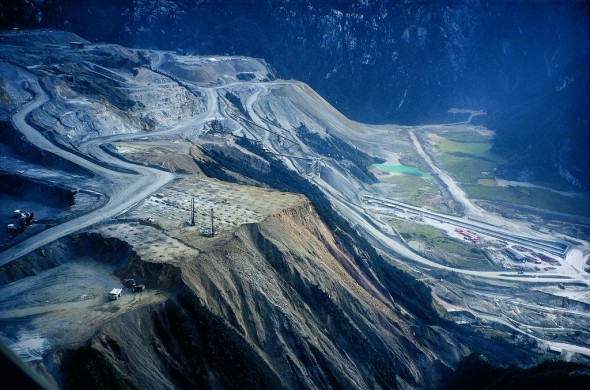
Recent Rise In Exploration
The gold market as a whole has historically peaked and then contracted, leading to periodic booms in exploration. Between 1980 and 2000, there was not much new gold exploration, Michael George, a mineral commodity specialist at USGS, told Circle of Blue.
Exploration has started again, though, now that prices are high for not only gold, but also for other mineral commodities like platinum, silver, and diamonds.
“Almost all companies have responded by increasing their exploration budgets over the past two years. As a result, the industry’s aggregate exploration total jumped 44 percent in 2010 and a further 50 percent in 2011, more than doubling from 2009’s recent low of $US 8.4 billion to the new all-time high of $US 18.2 billion in 2011,” states the 2012 Worldwide Exploration Trends report released by the Canada-based Metals Economics Group (MEG).
The report studied exploration spending for gold, base metals, platinum group metals, diamonds, uranium, silver, rare earths, potash, and other hard-rock metals. It found that Africa accounted for 15 percent of the global exploration spending in 2011, while 25 percent was focused in Latin America, with most activity taking place in Argentina, Brazil, Chile, Colombia, Mexico, and Peru. On its own, Canada brought in a whopping 18 percent of the $US 18.2 billion spent, while Australia accounted for 13 percent of the total.
Many of the positive drill results from exploration for gold in 2011 were reported in West Africa and Colombia, while significant results for silver were reported in Mexico. The Andean regions of South America accounted for many of the significant results reported for copper. Exploration for these three metals resulted in 92 percent of the significant drill results reported in 2011, according to the MEG report.
In terms of production, China and Mexico saw large production growth in 2011, said George of the USGS. China is the world’s largest gold producer and mined 355 metric tons (783,000 pounds) in 2011, according to the USGS Mineral Commodity Summary. Australia, the United States, and Russia are also top producers, mining 270 metric tons, 237 metric tons, and 200 metric tons (595,000 pounds, 523,000 pounds, and 441,000 pounds), respectively in 2011. All four countries saw an increase in production last year, but none compared to Ghana, which saw an increase of 18 metric tons (40,000 pounds) between 2010 and 2011.
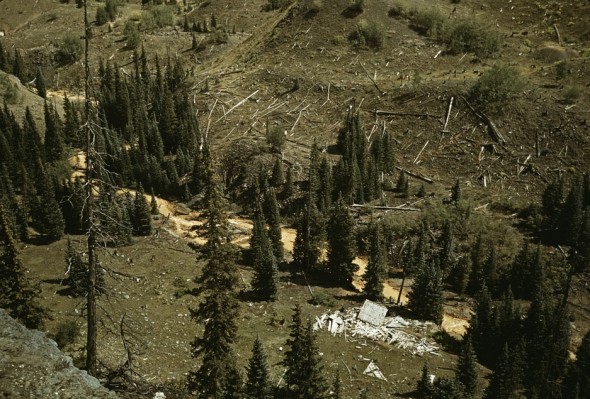
The Impact of Gold Mining
Large-scale surface gold mines can use between 60,000 and 100,000 cubic meters (16 million and 26 million gallons) of water each day, while gold extraction methods and the waste created have a long history of inflicting environmental damage on waterways.
- Hydraulic mining — a method of extraction first utilized during the 19th century gold rush in the Western United States — blasted millions of cubic meters of gold-containing gravel from the Sierra Nevada Mountains and filled streams with mercury-laced waste that continues to be a source of pollution in California’s waterways today.
- Heap leaching — in which a pile of gold ore is irrigated with a cyanide solution — is responsible for several hazardous superfund sites in the United States and may have caused pollution at Zijin Mountain in China’s Fujian Province.
- Containing the waste left behind after ore processing also poses a considerable threat to water — in 1995, 454 million liters (120 million gallons) of toxic tailings spilled into the Omai and Essequibo rivers in Guyana.
“As the richer ore bodies are mined, companies are tapping less productive seams of gold and other metals, with smaller concentrations of gold content and larger quantities of waste,” said Sampat of the No Dirty Gold campaign. “On average, producing enough gold to make a single wedding band generates 20 tons of waste.”
The mine waste can contaminate groundwater and soil, and many mining companies still dump their tailings directly into rivers, lakes and oceans, she added.
A new report, called Troubled Waters and released in February by Earthworks and MiningWatch Canada, details some of the world’s water systems that are most threatened by mine waste dumping. Of the 12 case studies documented, seven are located in Papua New Guinea and West Papua, Indonesia. Mining waste dumped into water bodies totals more than 180 million metric tons (400 billion pounds) each year, and nine of the world’s largest mining companies use this disposal technique, according to the report.
Data Discrepancies and Debate
There is debate, however, over whether actions taken by mining companies to mitigate the effects of tailings pollution in waterways is sufficient.
For example, the new Earthworks report states that the Grasberg mines in Papua, Indonesia, release more than 200,000 metric tons of tailings each day (80 million metric tons every year) into the Otomina and Ajkwa rivers, burying forests and wetlands and destroying aquatic life, according to the report.
On the other hand, Freeport-McMoRan Copper and Gold Inc. — the Grasberg mining site’s owner, a Phoenix-based company that is the world’s largest publicly traded copper producer, with additional operations in North America, South America, and Africa — released a special report in 2009 that does not agree with the 2012 Earthworks report.
In its 2009 report, Freeport-McMoRan details the company’s use of riverine tailings management at Grasberg — which contains the world’s largest recoverable reserves of gold and copper — in which a river system is used to transport tailings to a deposition area in the floodplain.
The company asserts that its method is consistent with international best practices: the tailings management program adds limestone to the tailings to neutralize acids, before releasing the waste into the rivers, and utilizes levees to contain tailings in the deposition area, costing the company $US 15.5 million every year.
Furthermore, company monitoring of aquatic life in the rivers found that fish and shrimp were suitable for consumption, as regulated by Indonesian food standards, while water quality samples met Indonesian and U.S. Environmental Protection Agency drinking water standards for dissolved metals, according to the company’s report.
The company responded to inquiries from Circle of Blue, but denied further comment for this article on its tailings management.
Other mining companies, like AngloGold Ashanti headquartered in Johannesburg, South Africa, have programs to rehabilitate water and land polluted by gold mining. AngloGold’s Woodlands Project in the Witwatersrand Basin of South Africa aims to grow native vegetation on tailings dams — 270 such dams exist in the Basin — to reduce erosion and pollution.
Source: Bloomberg News; Earthworks; Inter Press Service; Library of Congress; Metals Economics Group; Reuters; The New York Times; USGS; World Gold Council
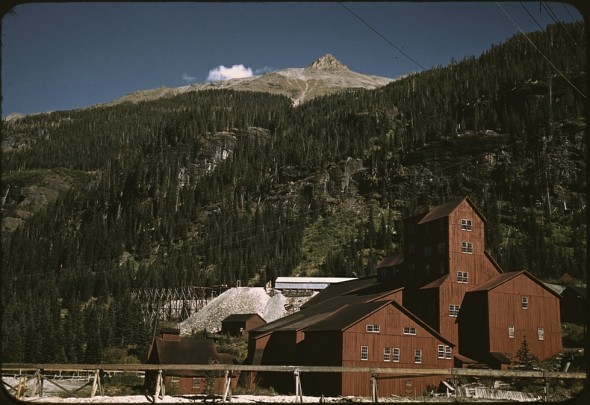
A news correspondent for Circle of Blue based out of Hawaii. She writes The Stream, Circle of Blue’s daily digest of international water news trends. Her interests include food security, ecology and the Great Lakes.
Contact Codi Kozacek


